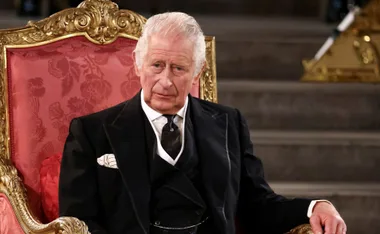There’s nothing more British than a good cup of tea and the monarchy, but how British is the British royal family?
Although the lineage of the British royal family has strong foundations in the United Kingdom, the royal roots are not entirely British.

We’re all just as excited as King Charles about a high tea!
(Image: Getty)In 1714 following the death of Queen Anne, King George I ascended to the throne, becoming the first German to assume the role of the British monarch.
King George I’s reign was not the last time a monarch of German descent was in power, with George II, George III, and George IV becoming prominent German Kings of Great Britain, with George III being the first of the German Kings born in England.
In 1837, George IV’s niece Queen Victoria ascended the throne and in 1840, she married German Prince Albert of Saxe-Coburg and Gotha.
Queen Victoria’s marriage to Prince Albert further scattered the lineage of the British royal family across Europe, with her children and grandchildren assuming the thrones of Russia, Germany, Spain, and Greece.
The breadth of Queen Victoria’s influence can still be seen across Europe with current reigning monarchs Queen Margrethe II of Denmark, King Carl XVI Gustaf of Sweden, King Felipe VI of Spain, King Harald V of Norway, and King Charles III all being descendants of Queen Victoria.

King Carl XVI Gustaf of Sweden is third cousins with King Charles’ mother, Queen Elizabeth II.
(Image: Getty)The modern British royal family is said to have been established in 1917, following the royal house undergoing a name change from the House of Saxe-Coburg and Gotha to the House of Windsor.
The British royal house was rebranded to the House of Windsor in response to rising anti-German sentiment during World War One, with the family also formally adopting a surname in Windsor for the first time.
With a large number of international royals set to attend the coronation, the diverse lineage of the British royal family showcases that the international royal families are not as distant as you may think!

The royal family took their name from the nearby Windsor Castle.
(Image: Getty)-(1).png?resize=380%2C285)
